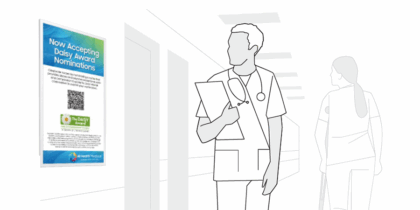The flu, one of the most deadly diseases the world has known, is not to be taken lightly, especially during a time when the public is beginning to change its behavior toward historically effective vaccination practices.
Although flu outbreaks are often difficult to predict ahead of time, an answer to this challenge might lie in the weather — or rather, in applying a prediction algorithm similar to those used in weather science to patterns in the spread of influenza.
Researchers from Boston’s Children’s Hospital have published a study on their work predicting flu cases using cloud-based EMR technology and additional information from other sources, including Google.
The study involved data from over 72,000 health providers, representing electronic records for more than 23 million patients, most of whom were seen in office-based settings. The data for the study was provided by leading health IT vendor athenahealth.
A Connection to the Weather
The process for the study was inspired by weather forecasting models. According to lead study author and faculty member at Boston Children’s Computational Health Informatics Program (CHIP) and Harvard Medical School, Mauricio Santillana, “We are incorporating the measurements used for weather forecasting that will lead to better predictions of what may happen tomorrow. That process, called data assimilation, is one in which you have your models, but you keep fine-tuning them as you get more information in real time.”
Meet the Algorithm, ARES
The flu prediction algorithm, ARES, was first trained with data on weekly total visits, visit counts for flu- and flu-like conditions and visit counts for flu vaccination that were collected from June 2009 through January 2012. Using this data, ARES was then able to predict flu activity for the next three years.
ARES performed successfully, correctly estimating the magnitude and timing of the national flu peak week and boasting error rates two to three times lower than previous models.
ARES also piggy-backed on data from the shuttered Google Flu Trends, a system that tracked flu outbreaks by mining internet searches. The additional data gave the researchers access to information not normally available, which helped contribute to better estimates.
Currently, athenahealth is providing the researchers with new and aggregated data on a weekly basis — an arrangement fueled by physicians reporting flu symptoms and cases in real time. Moving forward, the prediction algorithm is allowing the researchers to collaborate with the CDC and provide real-time flu estimates to the agency.
The predictive analytics space in healthcare will continue to grow as disease management and cost-savings become more important in an era of patient-centered and value-based care. Learn more about acute, real-time monitoring systems from the original study, available here.
From EMR technology to remote patient monitoring, mobile technology is changing the healthcare landscape. Find out more ways this technology is impacting both patients and providers here.







